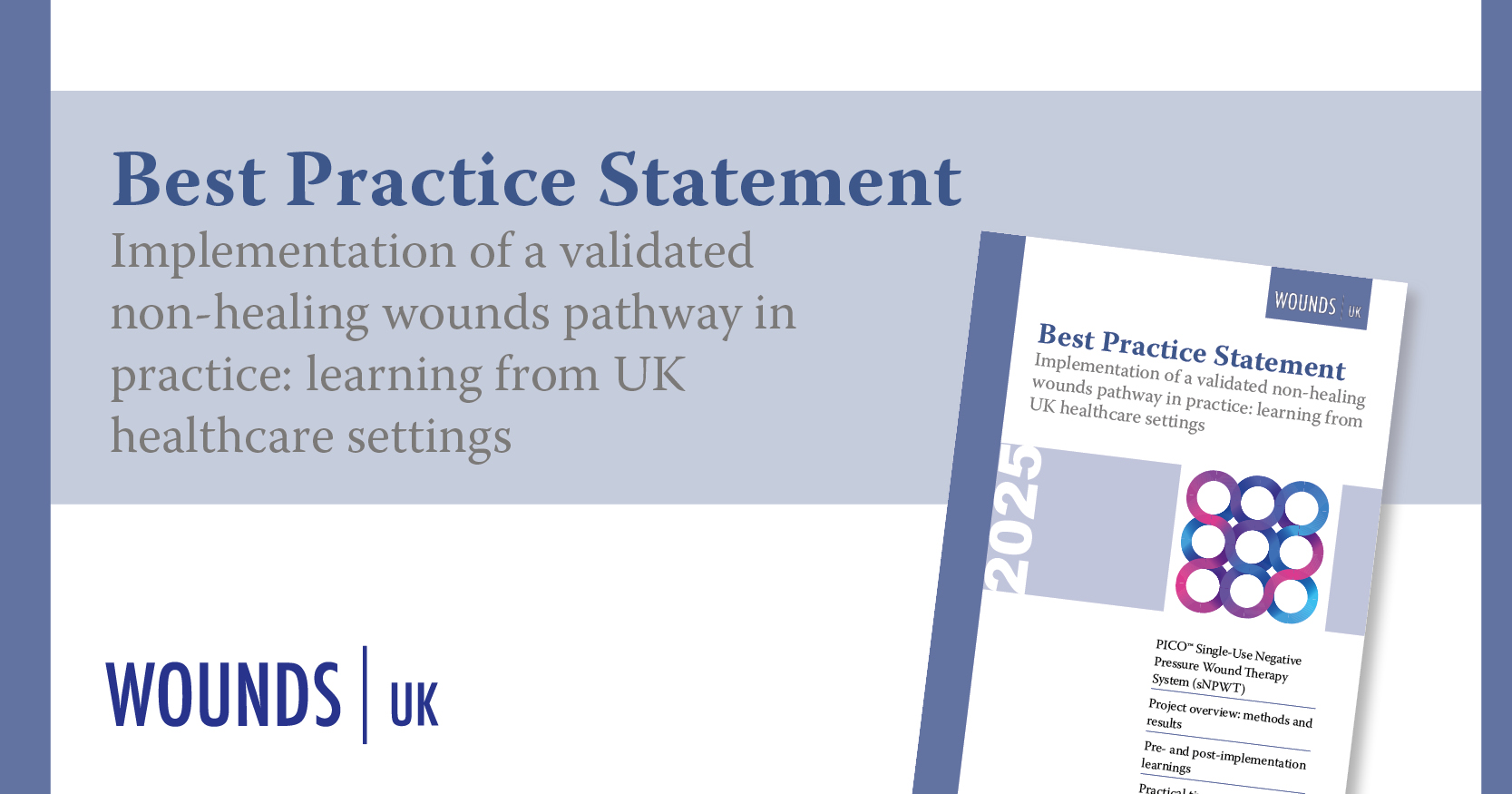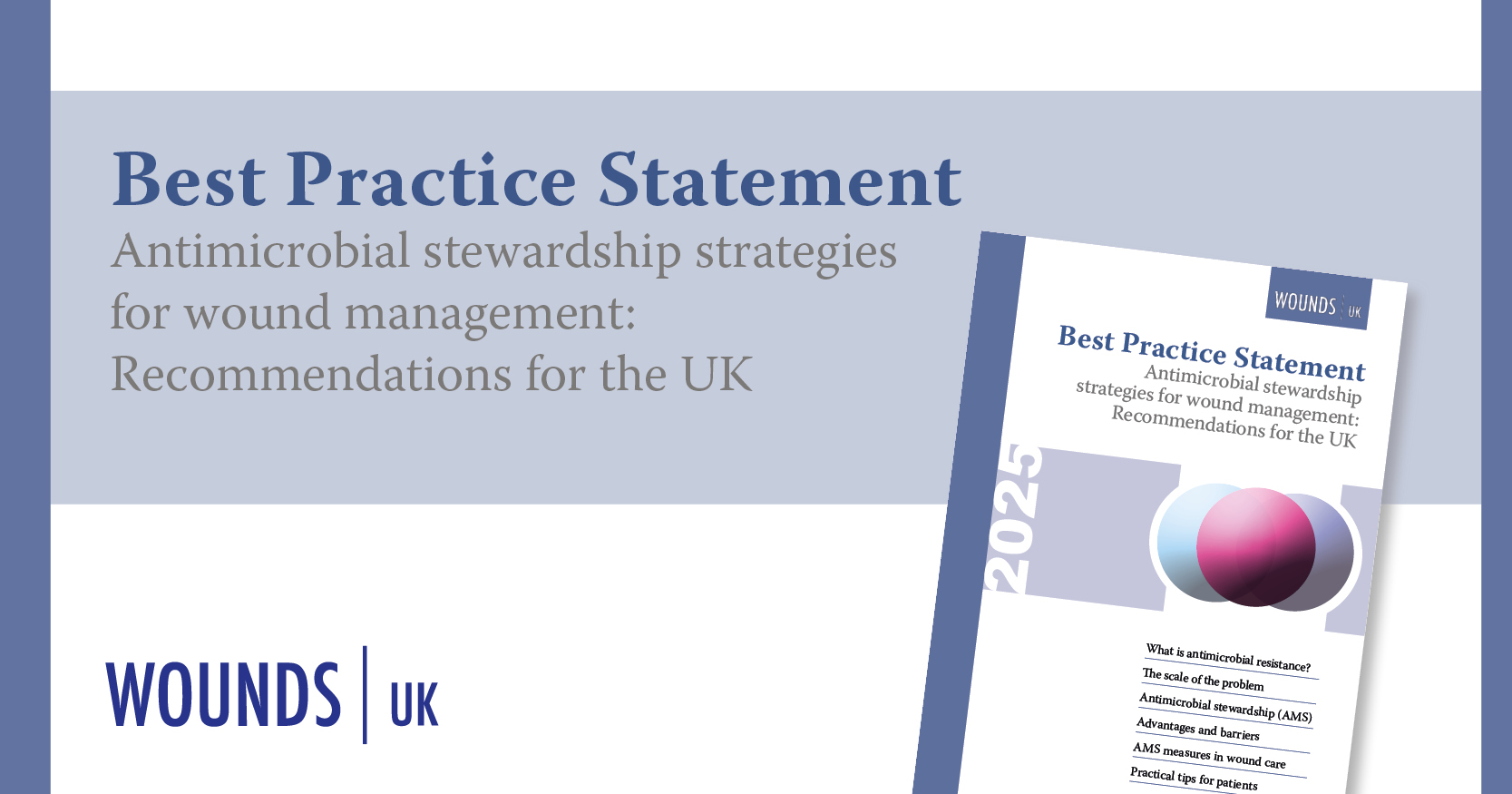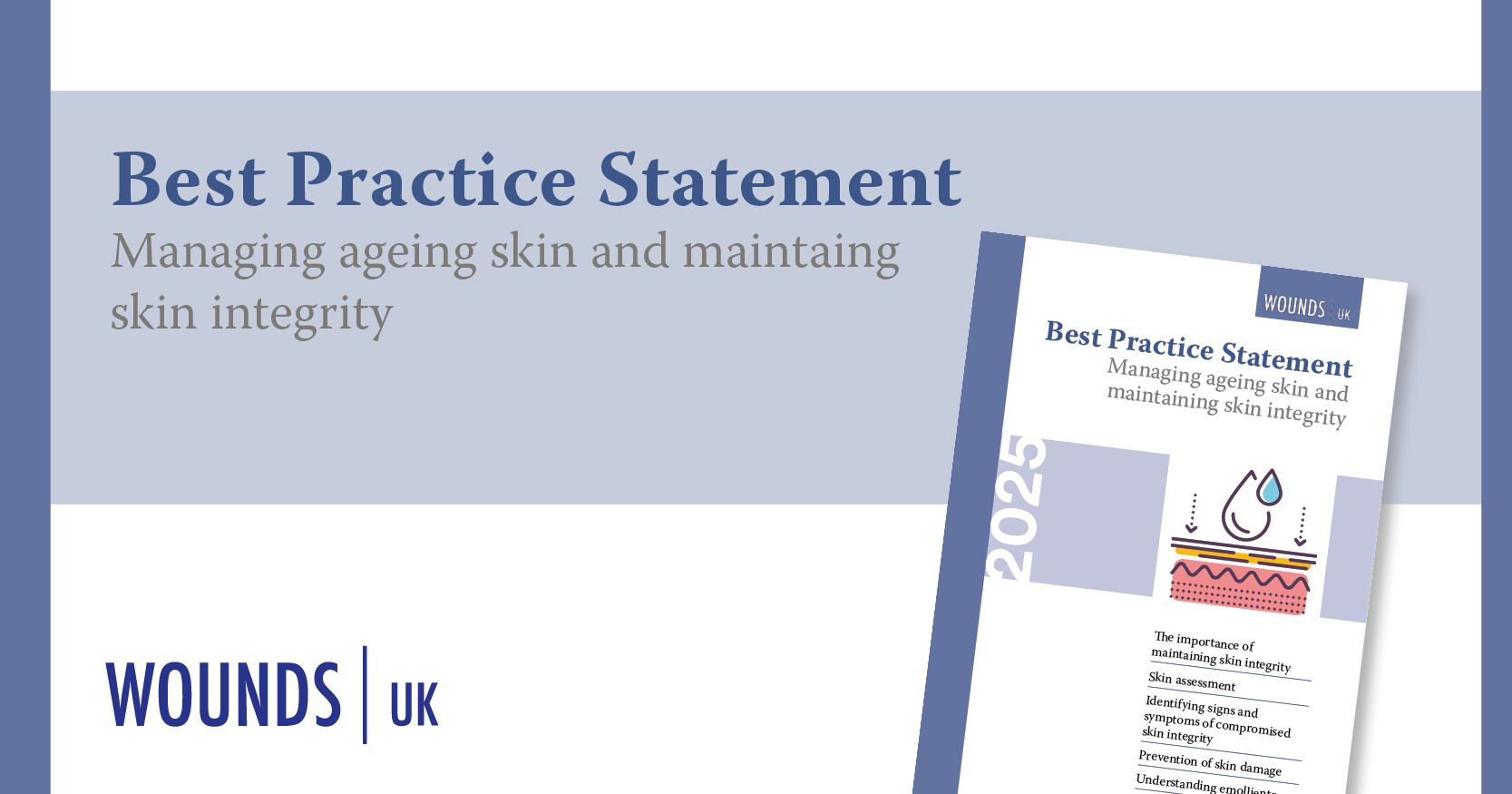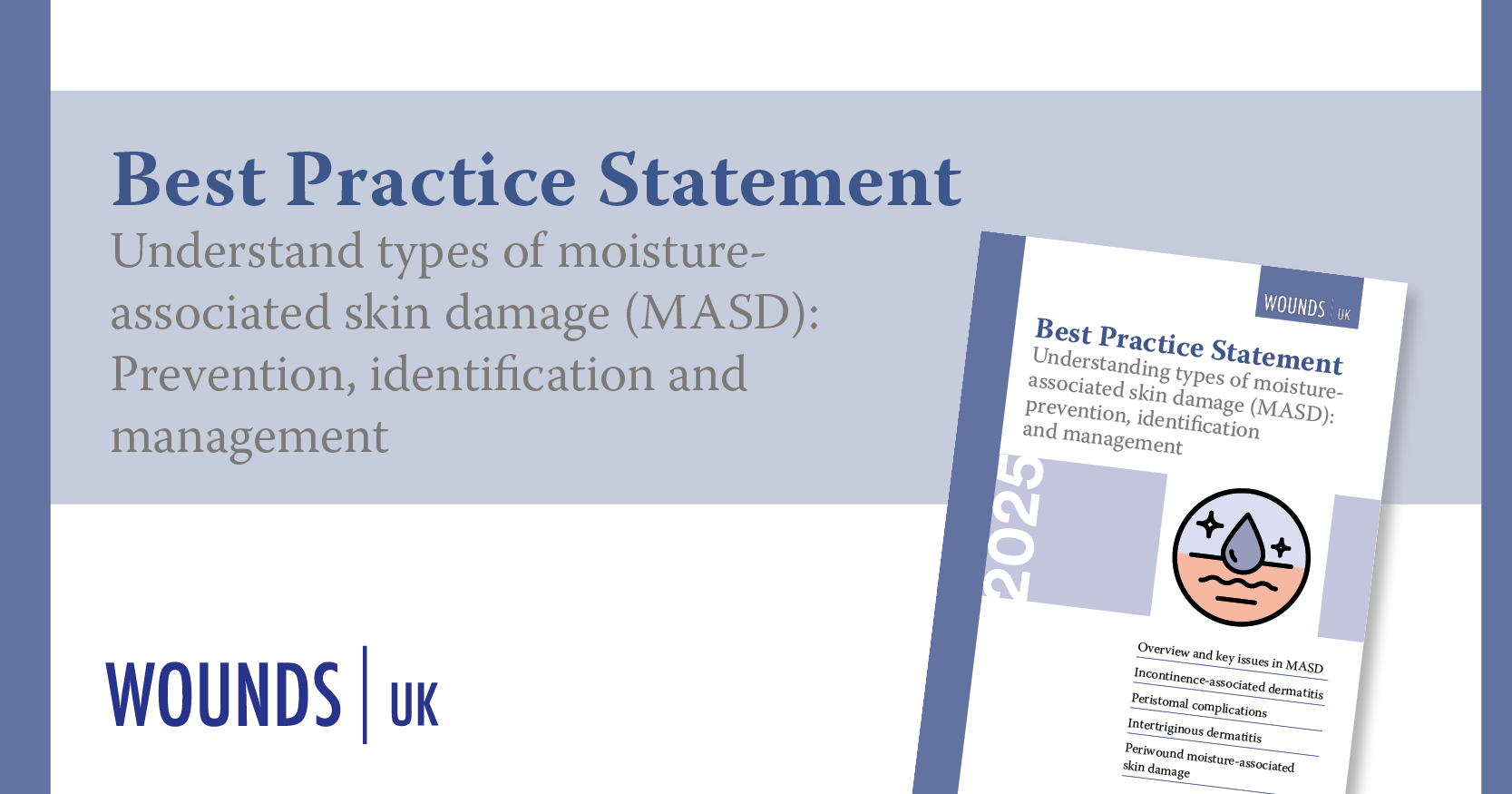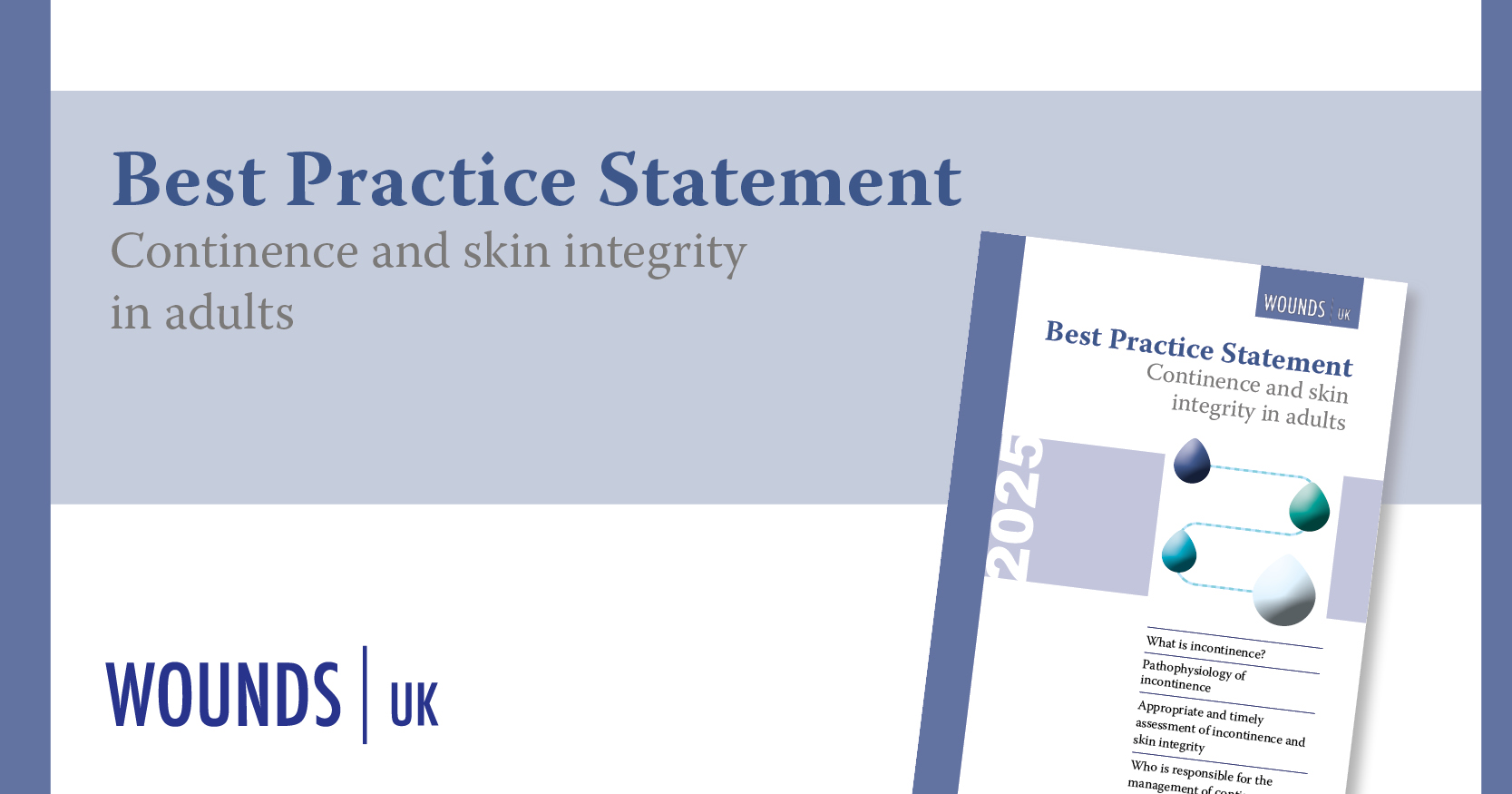Non-healing wounds are a significant burden on patients, clinicians and healthcare systems worldwide. Although it is hard to estimate the exact cost of care for non-healing wounds, overall wound care estimates reach several billion pounds per year in developed countries (Queen and Harding, 2023). For the National
Health Service (NHS), the majority of wound care costs – one of the top health expenditures of the NHS – are attributed to non-healing wounds in the UK population (Guest et al, 2020). This situation is only going to get worse as prevalence trends have shown a 71% increase in non-healing wounds from 2012/2013 to 2017/2018 (Guest et al, 2020).
Not only is there a need in the UK to accurately predict the future population needs for wound care, but it is also crucial to proactively and urgently tackle the projected rise in costs. Equally important is the need to enhance the patient experience, improve patients’ quality of life (QoL), and support the health and wellbeing of frontline staff delivering care to this growing population. A comprehensive approach that focuses on improved outcomes and financial sustainability, alongside the wellbeing of both patients and healthcare professionals, is
essential for ensuring high-quality, effective and safe wound care services.
PICO™ single-use negative pressure wound therapy (sNPWT) for non-healing wounds provides an opportunity to achieve improved outcomes and long-term cost-effectiveness (Kirsner et al, 2019; 2020; Dowsett et al,
2022). With a proven clinical efficacy over traditional NPWT (tNPWT), PICO™ sNPWT can help clinicians achieve better outcomes for their patients and reallocate crucial resources where most needed (Kirsner et al, 2019; 2020; Dowsett et al, 2022).
The PICO™ sNPWT pathway for nonhealing wounds has been validated across a previously reported cohort of 323 patients (Hampton et al, 2022). Measuring further outcomes across different wound aetiologies continues in the UK. The implementation of the PICO™ sNPWT pathway was presented in a Best Practice Statement document (BPS) released in 2022 (Dowsett et al, 2022). This current BPS is an evolution of that story of implementation. It is important to highlight that Jacqueline Dark and her team were instrumental in the launch of the 2022 BPS, and this statement stands true for this current document also. The evolution of these two BPS documents highlights the often-overlooked area of how clinicians can use a BPS to align to evidence-based clinical practice. This alignment can help achieve positive outcomes when a validated pathway, alongside robust data collection, is implemented across local populations of non-healing wound patients.
The objective of this publication is to share experiences and learnings from the PICO™ sNPWT roll-out and provide actionable insights. It shows the positive outcomes achieved and the practical lessons learned across the UK after implementation of the PICO™ sNPWT pathway. Therefore, clinicians can use this current BPS to align their clinical practices to this validated pathway for non-healing wounds. This BPS document summarises major outcomes, setting-specific challenges, and potential solutions. It also provides practical tips and notable patient experiences that reinforce best practice for the management of non-healing wounds.
This document does not provide conceptual background on sNPWT, except a brief introduction. For that purpose, references to relevant literature are provided throughout. It is not possible to overstate the importance of early identification and intervention for achieving optimal outcomes for people with non-healing wounds. This BPS document underlines this message.
Jacqui Fletcher OBE, Chair
Download the PDF below to access the full Best Practice Statement

